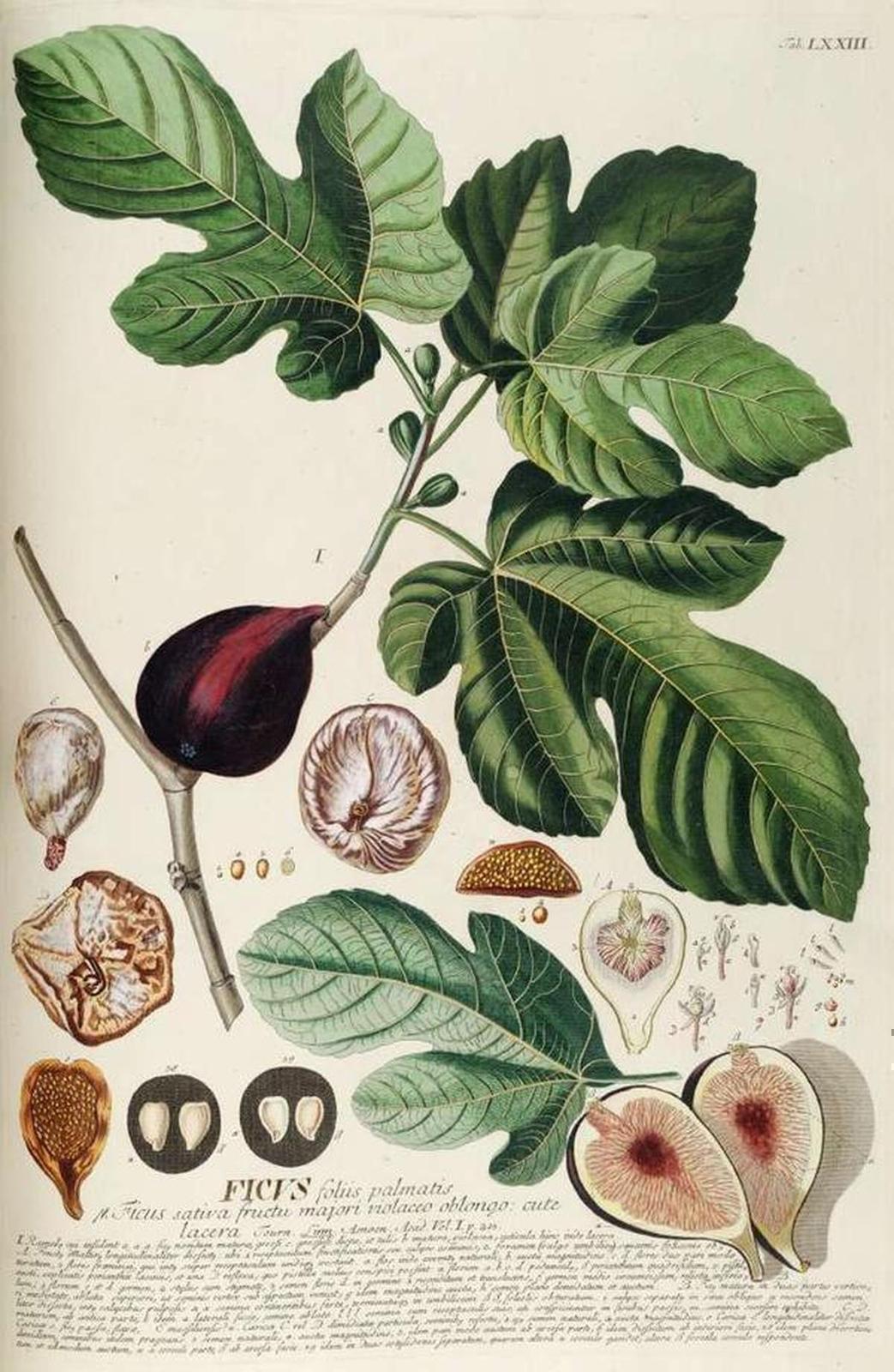Ficus carica L.
MoraceaeUno de los árboles frutales más antiguos, la higuera era ya conocida y cultivada por los pueblos del Próximo Oriente: una pintura egipcia de más de 4.500 años de antigüedad, en Beni- Hassan, nos muestra una recolección de sus nutritivos y digestivos frutos, los higos. Estos aparecen también en el Antiguo Testamento como signo de abundancia en la Tierra Prometida. Según cuenta el Génesis, Adán y Eva, tras haber comido de la fruta del árbol del conocimiento, se cubrieron con hojas de higuera. El nombre de ficus proviene del antiguo nombre en latín con que los romanos designaban a este árbol. La palabra carica hace referencia a una zona del Asia Menor llamada Caria, de donde procedían los mejores y más famosos higos que se consumían en la antigua Roma. Se atribuyó entonces a la planta un valor positivo de fertilidad y bienestar por ser el árbol de los orígenes de esta cultura: la cesta en la que los fundadores de la ciudad, Rómulo y Remo, fueron abandonados en las aguas del Tíber se detuvo milagrosamente debajo de una higuera silvestre. Fue muy abundante en cultivo mixto con el olivo en el Aljarafe sevillano durante la época andalusí, donde el agrónomo y tratadista Ibn al-Awwam tenía, hacia el año 1200 d.C., su huerto de experimentación.
Procedencia
Oriental/AsiáticoCalendario
Hábitat
Morfología
 Árbol
Árbol
 Esférica
Esférica
 Simple
Simple
 Palmeada
Palmeada
 Alterna
Alterna
 Dentado
Dentado
 Lobado
Lobado
 Auriculada
Auriculada
 Agudo
Agudo
 Caduco
Caduco
